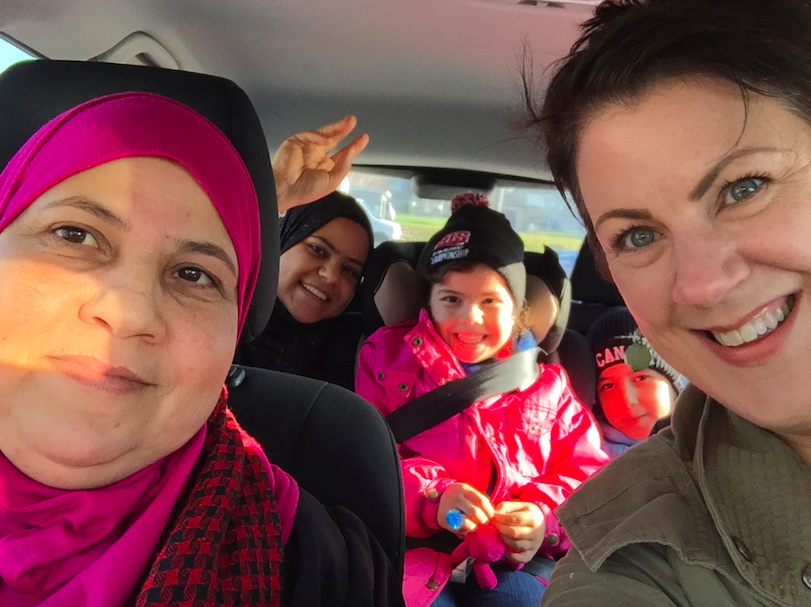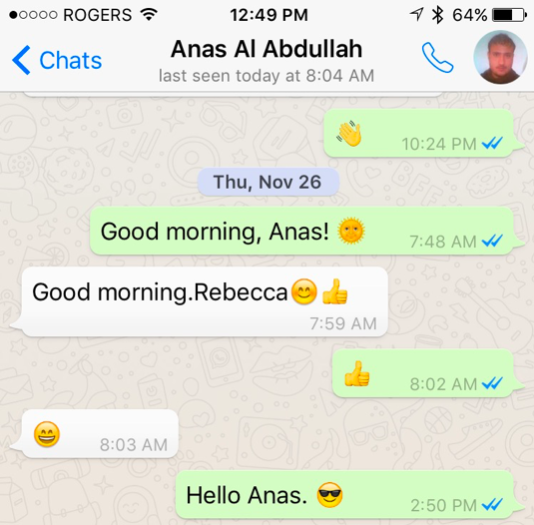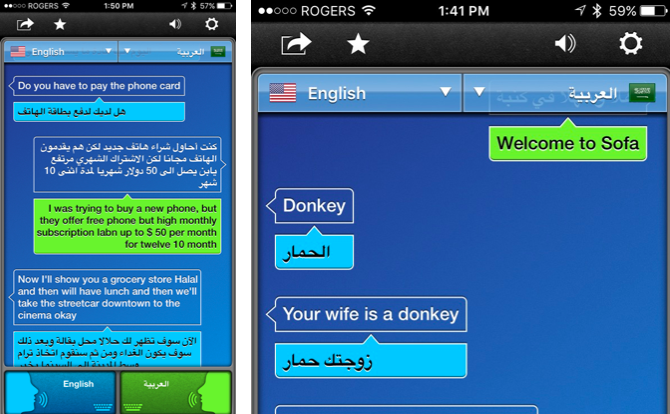The Waving Hand Emoji: Connecting with the Abdullah Family
Rebecca Davies, The Ripple Refugee Project |
Wednesday, January 20, 2016
Contributed by Rebecca Davies of The Ripple Refugee Project.
As we settle thousands of new permanent residents in Canada, something more quietly dramatic is happening: a re-weaving of our social fabric. The Ripple Refugee Project started as a meeting organized by Andrew FitzGerald and his wife Claudia Blume in their
Riverdale home, just a few months ago. Within days, sixteen other people joined the project, many meeting each other for the first time. Together, they moved quickly: raised the funds, put together an application through Lifeline Syria, made plans and new friends.
The Syrian story is filled with powerful accounts of rebels and regimes, barrel bombs and migrants, smugglers and passengers, Islamaphobia and #WelcomeRefugees. In Canada, it’s nearly always one of volume: 25,000 refugees, thousands government-assisted, hundreds privately sponsored. Rebecca Davies of The Ripple Refugee Project shares a different story of a ripple effect, connection, emoji, communication, and the quotidian.
Emoji and the technology that connects us: Helping Syrian refugees integrate into Canada
 Our sponsored Syrian family was all the ways different from us you’d imagine: war refugees, languishing in Beirut for three years, Sunni Muslim, and Arabic-speaking only, according to the government profile. For our sponsor group
Our sponsored Syrian family was all the ways different from us you’d imagine: war refugees, languishing in Beirut for three years, Sunni Muslim, and Arabic-speaking only, according to the government profile. For our sponsor group, technology has been a great relationship accelerator and equalizer in this most intense period and undertaking.

Technology, that same hardware and social media platforms that are supposedly decaying our relationships and making us lonely, has made possible lovely and essential moments of connection between us and individual members of the Abdullah family. Here are five favourites:
- Glimpsing our family on TV for the first time. Far from the ultimate in being alone with everyone, it was on tv we first glimpsed our family. Seeing them disarmed any fear about who we were sponsoring. Watching them take care of each other, how they interacted, made us want to do even more. They’re just like us. At the same time, the tv was a glass wall: the Abdullahs couldn’t see us, didn’t know we existed, and that people in Canada cared about them.
- Seeing each other on Skype. And then, they could see us! We yelled across the valley between Toronto and Beirut over the internet. Because we now heard each others’ tones of voice and choices of words, we had agency in communicating our own messages and how we’d receive the others.
- Smartphones keep us connected. The Abdullah family had smartphones, and remained in contact with family in Syria via WhatsApp and Facebook while in Lebanon for three years. On his first day in Canada, Anas and I exchanged WhatsApp contact details for file transfers and other admin uses.
- Yes, a waving hand emoji. But on November 26, I woke up to… a waving hand emoji. I remember feeling Whoa, there’s a connection here! Was it deliberate? I texted Anas back a greeting of my own and got a thumbs up. Instant messages act much like postcards: authentic feelings pinged in asynchronous snapshots. The connection I felt with Anas was real; turns out we get along quite well!
- SayHi Translate brings us closer. 75 percent of the time, this SayHi Translate voice translation app saves the day as a game-changer in communicating and planning. The rest of the time, it’s a source of great hilarity, which only brings us closer.
 There’s also time to connect through silence.
There’s also time to connect through silence. The Abdullahs have had close relatives killed by snipers, die of other trauma, and disappear altogether. The Abdullahs were solidly middle-class, and it will take years to build their lives again. Recently, of course, we’ve been watching cities under siege in Syria and people dying of malnutrition. Some things are unutterable for the Abdullahs, and would be impossible for us, their Canadian sponsors, to understand. In these moments, we’ve learned to turn off the technology and let the silence connect us.
Some chose to sponsor a family through a church congregation because that means more hands to do all the front-line and hands-on work, and that’s understandable. But for me, it’s the quotidian that has been the richest part of this experience: drives to the dentist and Service Ontario, zoo visits, winter clothes shopping. The quotidian, made possible by the technology that we have to connect us.